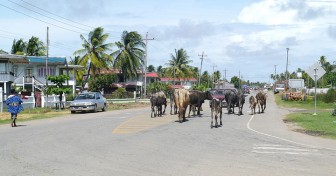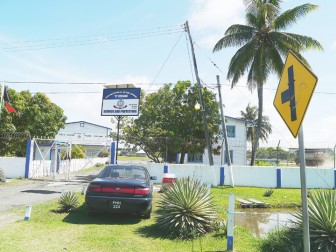Story and photos by Shabna Ullah
The village of Adventure on the Corentyne is quite small with a population of about 300, but it is well-known for being home to the Felix Austin Police College which trains new officers.
Located about 21 miles from New Amsterdam, Adventure is bounded by Hogstye and Limlair villages. The entrance to the farming community of Lesbeholden and the connecting areas in Black Bush Polder can be found at where the village begins.
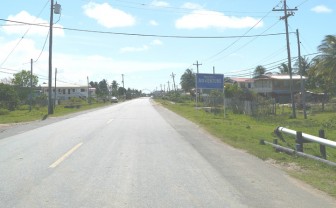 The police college was constructed in 1990 with the help of well-wishers who donated the necessary materials and equipment, while the construction was udertaken by members of the Police construction section from Georgetown and Berbice. The location where the college now stands was previously the Traffic Outpost, which was established after the commissioning of the
The police college was constructed in 1990 with the help of well-wishers who donated the necessary materials and equipment, while the construction was udertaken by members of the Police construction section from Georgetown and Berbice. The location where the college now stands was previously the Traffic Outpost, which was established after the commissioning of the
Corentyne Highway in the early 1970s. The college was declared opened in 1990 by the late President Hugh Desmond Hoyte. It was subsequently shut down for a few years, but restored in 2008 at a cost of $10M.
The restoration was done following the intervention of former Commander of ‘B’ Divison, Clinton Conway and with the help of the Central Corentyne Chamber of Commerce and other entities. Recently, a computer centre was commissioned at the college.
Most of the residents of Adventure are engaged in rice, cash crop and cattle farming, while others earn their livelihood from fishing. The village has a grocery shop and an eye clinic.
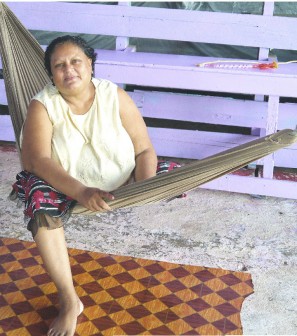 There was also a chemicals shop – Amazon Chemicals – that was forced to close its doors because of competition from persons who smuggle drugs from Suriname and sell at a cheaper rate. The building has since been sold to a contracting company.
There was also a chemicals shop – Amazon Chemicals – that was forced to close its doors because of competition from persons who smuggle drugs from Suriname and sell at a cheaper rate. The building has since been sold to a contracting company.
A few of the residents have sought employment outside the village, with one being a manager at an insurance company, a teller and a teacher at Black Bush Primary school.
Students attend the Kildonan Primary and Bush Lot Secondary Schools, as well as schools in New Amsterdam. Persons access health care facilities at the Bush Lot Health Centre and at the Port Mourant or New Amsterdam Hospitals.
Fishermen would use the canal that separates the village from Hogstye to moor their boats when they come in from sea. During this newspaper’s visit, most of the fishermen had already gone out to fish. Some would spend a few days out in the deep and return with a catch of big fishes such as snapper and trout, while others would not venture so far and would return within a day.
Sunday Stabroek caught up with three fishermen; Shahab, Looknauth, and Mangal Outar, who were preparing to go out to fish later in the evening. They catch mostly ‘Hanafolk’ and other smaller species of fish which they would sell by the pound in either wholesale or retail quantities. At the time they were in the 40 ft boat, fitted with a 15 hp engine which belonged to Outar, mending their seine.
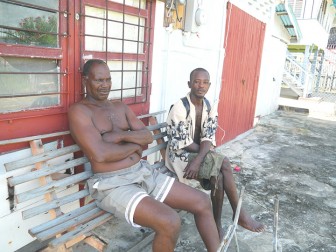
The men said that about six boats use the facility and they wanted the authorities to make it more convenient. According to them, a “floodlight” is badly needed for when the fishermen come in late at night. They also called for the establishment of a wharf and said they would be willing to pay for the improved facility.
At the home of Dookie Rickram, his two dogs rushed to the gate, barking loudly as this newspaper approached. But they quickly scampered away when Rickram’s five-year-old son whom he had just picked up from school, chased them to the back.
The man who has been living in the village all his life, does rice and cash crop farming to earn an income. At the end of the rice crop he takes his paddy to Nand Persaud Rice Mill along with most of the other farmers on the Corentyne.
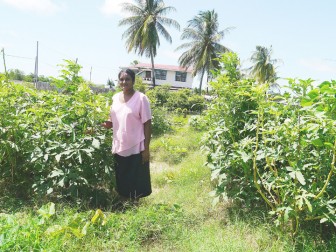
As for the cash crop produce, that is sold at the Port Mourant market in wholesale and retail quantities. During the last rice crop he suffered losses in a section of his field because of the constant heavy rainfall. He hopes that this crop would be better.
Rickram who lives opposite the police college said even with the presence of so many officers some persons are still being affected by petty thieves who would raid their “ducks and fowls” in the pens.
Next door, Wesley Marks was sitting in the front of his yard chatting with his friend, Colin Moore, a cane-harvester of Alness Village. He is engaged in cash-crop farming in his backyard and in the backdam, but he did not invest in this crop because of the rain. The land where he farmTurn to pages 4 & 5Bs in the backdam is “low and it is affected by flooding.” The authorities had fixed the drainage but his farm is located in the “reef.” He moved to the village several years ago and said it was “okay to live in.”
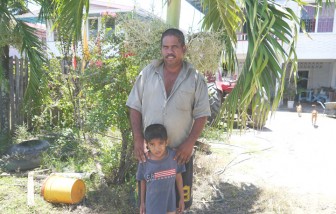
Marks’ neighbour, Faneza Ali was sitting in her hammock having lunch with her daughters, Zalena and Shaneza and her grandson, Javed, 3, but she was still very accommodating. Javed, a curious little chatterbox, was fascinated with this reporter’s camera and cellphones. He even posed to have his picture taken.
Faneza’s husband, Amin Ali, a “freelance mechanic” had gone out to work as well as another daughter who works as a bank clerk. She also has two other daughters. The woman who moved from Line Path, Skeldon when she got married almost 30 years ago likes living in the village.
She said proudly that she along with Zalena and Sheneza have been engaging in various activities around the yard to supplement their income.
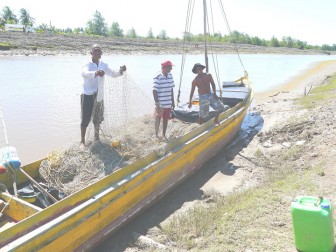
Faneza rears Creole ducks and fowls which she sells along with eggs to persons in the neighbourhood. And Zalena, with the help of her younger sister, Shaneza, has been engaging in organic farming and has hardly left a piece of land in their yard to go to waste.
She has planted large quantities of vegetables such as ochro, bora, pepper, squash, cucumber, boulanger and pigeon peas. Most of the produce is sold to wholesalers while residents would also go to their home to make purchases.
Zalena said proudly that she prepares the land and does all the planting on her own. She enjoys gardening and does not find the tasks difficult.
Another cash crop farmer; Mahase Ramjas who also owns a coconut estate was peeling dried coconuts when the Sunday Stabroek caught up with him. He sells the coconuts for $2,000 per a bag of 100 and would also use some to make oil for household purposes.
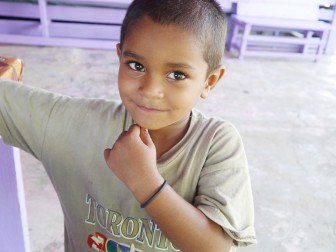
Ramjas serves as the chairman of Central Corentyne Farmers’ Group that runs from Bush Lot to Bloomfield, and as the secretary of the Ratepayers Association. He was also a councillor with the Bush Lot/Adventure Neighbourhood Democratic Council (NDC).
Ramjas who is very popular in the village for “speaking out” said the NDC was recently dissolved because it was not doing enough. He does not feel that the Interim Management Committee that has been installed would do enough either. He said residents were planning to protest the NDC because they preferred to have “Local Government election so more competent people would be appointed and it would run more efficiently.”
He wants “more transparency in the NDC.”
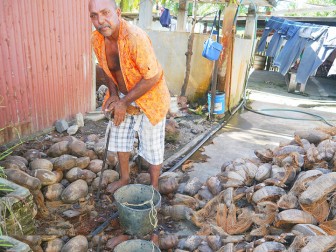
He also recalled an incident where a former regional official failed to fulfil his promise to provide a machine for him to have proper drainage on his land.
Meanwhile, Ramjas said “most of the residents have migrated and most of the houses are closed up.” He recalled that the estate was bought by Barclays Bank in 1966 and later sold at a cost of $127,000 to residents who took loans from the Royal Bank to pay for it. He was among the 10 persons who bought the land.
He is happy that the village has developed and is “thankful for the progress. At least we can go to the koker and get fresh fish and shrimp…”
